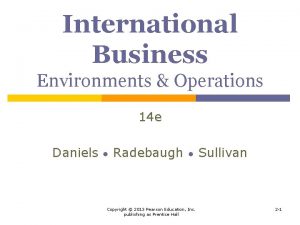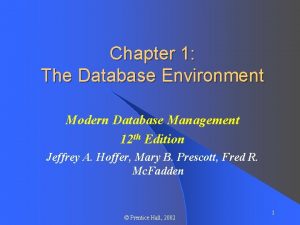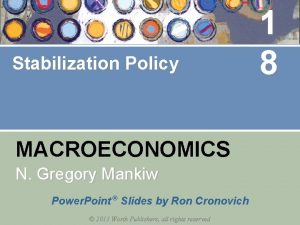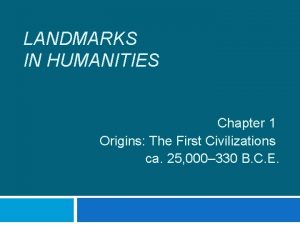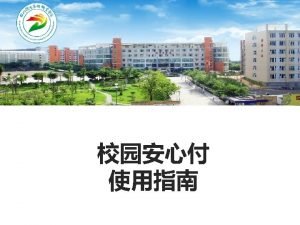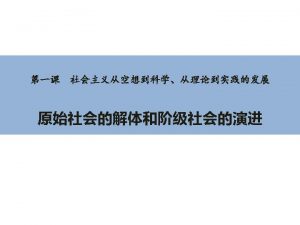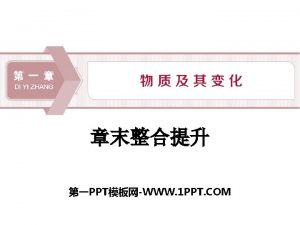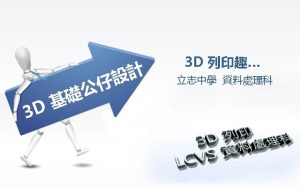5 th Edition PPT 8 1 Chapter 8




































- Slides: 36

5 th Edition PPT 8 -1

Chapter 8 Site Location Mc. Graw-Hill/Irwin PPT 8 -2 Retailing Management, 5/e Levy/Weitz: Copyright © 2004 by The Mc. Graw-Hill Companies, Inc. All rights reserved.

Three Levels of Analysis PPT 8 -3

Trade Area Issues • Which Trade Areas Are Most Attractive for Locating Retail Outlets? • How Many Outlets to Locate in a Trade Area? – More Stores Increases Economies of Scale and Reduces Costs – More Stores also Results in More Cannibalization and Less Sales per Store PPT 8 -4

Factors Affecting Demand for a Region or Trade Area PPT 8 -5

Factors Affecting the Attractiveness of a Site • How Attractive Is the Site to the Retailer’s Target Market? – Match Between Trade Area Demographics and Retailer’s Target Market – Likelihood of Customers Coming to Location • Convenience • Other Attractive Retailers At Location Principle of cumulative attraction - a cluster of similar and complementary retailing activities will have greater drawing power. PPT 8 -6

Convenience of Going to Site Accessibility • Road pattern and condition • Natural and artificial barriers • Visibility • Traffic flow • Parking • Congestion • Ingress/egress PPT 8 -7

Location Within a Center • In High Traffic Areas • Near Anchor • Center of Shopping Area • Near Stores Selling Complementary Merchandise • Clustering Specialty Stores Appealing to Teenagers • Better locations cost more PPT 8 -8

Map of Dallas’ North Park Center PPT 8 -9

Estimating Demand for a New Location • Definition of the Trade Area – Primary, Secondary, Tertiary Zones • Approaches for Estimating Demand – Analog Approach – Regression Approach – Huff Gravity Model PPT 8 -10

Trade Area Primary zone - 60 to 65 percent of its customers Secondary zone - 20 percent of a store’s sales Tertiary zone - customers who occasionally shop at the store or shopping center PPT 8 -11

Factors Defining Trade Areas • Accessibility • Natural & Physical Barriers • Type of Shopping Area • Type of Store • Competition • Parasite Stores PPT 8 -12

Oblong Trade Area Caused by Major Highways and Natural Boundaries PPT 8 -13

Sources of Information • Customer Spotting • Census Data • Geodemographic Information Systems – ACORN • Information on Competition – Yellow Pages PPT 8 -14

Customer Spotting Purpose: to spot, or locate, the residences of customers for a store or shopping center. How to obtain data: • credit card or checks • customer loyalty programs • manually as part of the checkout process • automobile license plates PPT 8 -15

Selecting a Target Market • Home Page Is the introductory or first material viewers see when they access a retailer’s Internet site. It is the equivalent to a retailer’s store-front in the physical world. • Virtual Store Is the collection of all the pages of information on the retailer’s Internet site. • Ease of Access PPT 8 -16

Target Market • The Limited has a welldefined target market: the moderate-income, careeroriented woman who is fashion conscious. – How does this influence location decisions? PPT 8 -17

Identifying a Target Market • Market segment should be measurable. • Market should be accessible. • Market should be substantial enough to be profitable. PPT 8 -18

Location of Store-Based Retailers • Anchor Stores are the stores in a shopping center that are the most dominant and are expected to draw customers to the shopping center. • Free-Standing Retailer generally locates along major traffic arteries and does not have any adjacent retailers to share traffic with. PPT 8 -19

Retail Location Theories • Retail Gravity Theory Suggests that there are underlying consistencies in shopping behavior that yield to mathematical analysis and prediction based on the notion or concept of gravity. PPT 8 -20

Typical Size & Trading Area of Shopping Centers LO 2 Type of Shopping Center Neighborhood Gross Leasable Square Feet 30, 000 to 150, 000 Primary Trade Area 3 Miles PPT 8 -21

Typical Size & Trading Area of Shopping Centers LO 2 Type of Shopping Center Community Gross Leasable Square Feet 100, 000 to 350, 000 Primary Trade Area 3 -6 Miles PPT 8 -22

Typical Size & Trading Area of Shopping Centers LO 2 Type of Shopping Center Regional Gross Leasable Square Feet 400, 000 to 800, 000 Primary Trade Area 5 -15 Miles PPT 8 -23

Typical Size & Trading Area of Shopping Centers LO 2 Type of Shopping Center Super -Regional Gross Leasable Square Feet 800, 000 Primary Trade Area -25 Miles PPT 8 -24 5

ID and Geographic Segments • www. claritas. com – http: //cluster 1. claritas. com/claritas/Default. jsp – Free stuff • Similar people share similar traits – Tend to live together PPT 8 -25

Geographic Information Systems • Geographic Information System (GIS) - a computerized system that combines physical geography with cultural geography. • Thematic maps are generated • Color coded • Culture – a set of shared values and behaviors held in common by an identifiable group of people. • Culture can create barriers. PPT 8 -26

GIS Components Cultural Geography Physical Geography Latitude/Longitude Land/Water Terrain Rainfall/Snow Temperature Data Inputs GIS (Data Aggregation and Analysis via Computer) Output Maps and Other Displays of Information PPT 8 -27 Demographics Manmade Structures Consumption Patterns Work Patterns Leisure Behavior Deviant Behavior

Uses of GIS • Market selection. • Site analysis. • Trade area definition. • New store cannibalization. • Advertising management. • Merchandise management. • Evaluation of store managers. PPT 8 -28

Process for Selecting a Retail Location LO 3: Exhibit 7. 5 Identify the most attractive markets in which to operate Identify the most attractive sites that are available within each market Select the best site(s) available PPT 8 -29

Customer Spotting Map for a Supermarket LO 5: Exhibit 7. 8 City Limits Store 2 miles from store PPT 8 -30 4 miles from store 3 miles from store 1 mile from store

Store Density and Site Availability Map LO 5: Exhibit 7. 11 PPT 8 -31

Checklist for Site Evaluations • Local Demographics • Population and/or household base • Population growth potential • Lifestyles of consumers • Income potential • Age makeup • Population of nearby special markets, that is, daytime workers, students, and tourists, if applicable • Occupation mix PPT 8 -32

Checklist for Site Evaluations • Traffic Flow and Accessibility • Number and type of vehicles passing location • Access of vehicles to location • Number and type of pedestrians passing location • Availability of mass transit, if applicable • Accessibility of major highway artery • Quality of access streets • Level of street congestion • Presence of physical barriers that affect trade area shape PPT 8 -33

Checklist for Site Evaluations • Cost Factors • Terms of lease/rent agreement • Basic rent payments • Length of lease • Local taxes • Operations and maintenance cost • Restrictive clauses in lease • Membership in local merchants association required • Voluntary regulations by local merchants PPT 8 -34

Nature of Site • Store Compatibility Exists when two similar retail businesses locate next to or nearby each other and they realize a sales volume greater than what they would have achieved if they were located apart from each other. PPT 8 -35

Debate Points: • The most important factor in determining where a retailer is located is the place of residence of consumers in the area. • 4 Super Walmarts operate in Hatco, TX, with a trade area of 125, 000 people. 1 Super Target store is also located there. Should a 5 th Super Walmart be added? PPT 8 -36
 Security in computing 5th edition ppt chapter 2
Security in computing 5th edition ppt chapter 2 Using mis 10th edition
Using mis 10th edition Chapter 1
Chapter 1 Marketing for hospitality and tourism 7th edition
Marketing for hospitality and tourism 7th edition Information technology project management 9th edition ppt
Information technology project management 9th edition ppt Marketing hospitality and tourism
Marketing hospitality and tourism Supply chain management sunil chopra 6th edition ppt
Supply chain management sunil chopra 6th edition ppt International business daniels
International business daniels Modern database management 12th edition ppt
Modern database management 12th edition ppt Database management environment
Database management environment Principles of economics mankiw 9th edition ppt
Principles of economics mankiw 9th edition ppt Principles of economics mankiw 9th edition ppt
Principles of economics mankiw 9th edition ppt Organizational behavior 18th edition
Organizational behavior 18th edition Thermodynamic vs kinetic control
Thermodynamic vs kinetic control Mechanics of materials chapter 10 solutions
Mechanics of materials chapter 10 solutions Mechanics of materials 6th edition beer solution chapter 7
Mechanics of materials 6th edition beer solution chapter 7 Mechanics
Mechanics Chapter 5 mechanics of materials solutions
Chapter 5 mechanics of materials solutions Beer and johnson
Beer and johnson Everything's an argument chapter 1 questions
Everything's an argument chapter 1 questions Chapter 6 portable fire extinguishers
Chapter 6 portable fire extinguishers Engineering economy 16th edition solution manual chapter 5
Engineering economy 16th edition solution manual chapter 5 Engineering economy 16th edition chapter 4 solutions
Engineering economy 16th edition chapter 4 solutions Business essentials 12th edition chapter 1
Business essentials 12th edition chapter 1 Lazarus cognitive appraisal theory
Lazarus cognitive appraisal theory Prehospital care 11th edition
Prehospital care 11th edition Role requirements change in different situations
Role requirements change in different situations Organic chemistry david klein 3rd edition
Organic chemistry david klein 3rd edition Landmark in humanities 5th edition
Landmark in humanities 5th edition Infant child and adolescent berk 8th edition chapter 1
Infant child and adolescent berk 8th edition chapter 1 Mechanic of materials
Mechanic of materials Ferdinand beer
Ferdinand beer Adler and rodman 2006
Adler and rodman 2006 Understanding business 12th edition chapter 1
Understanding business 12th edition chapter 1 Financial accounting ifrs 4th edition chapter 12
Financial accounting ifrs 4th edition chapter 12 Stephen robbins principles of management
Stephen robbins principles of management Beer johnston
Beer johnston







